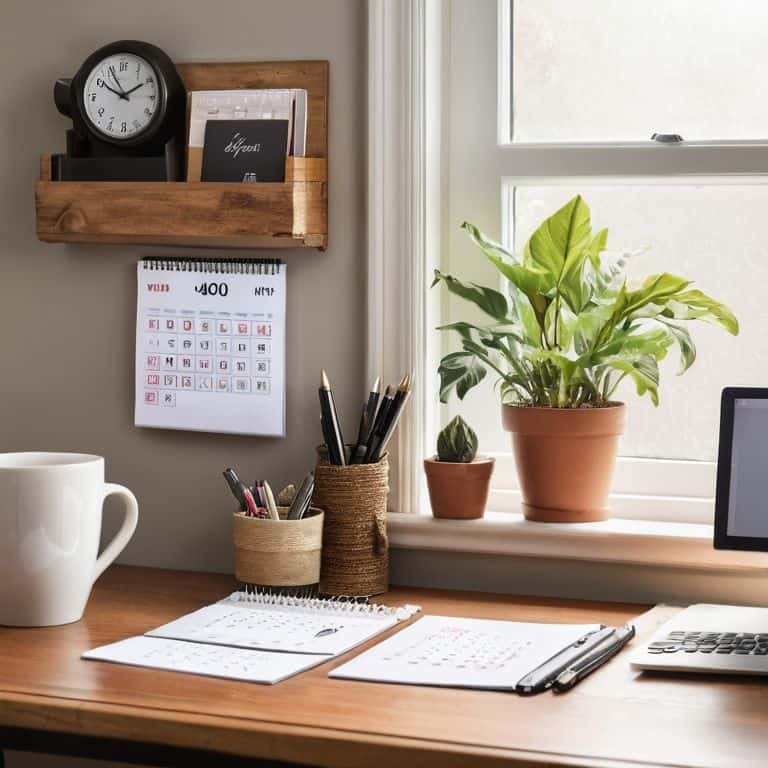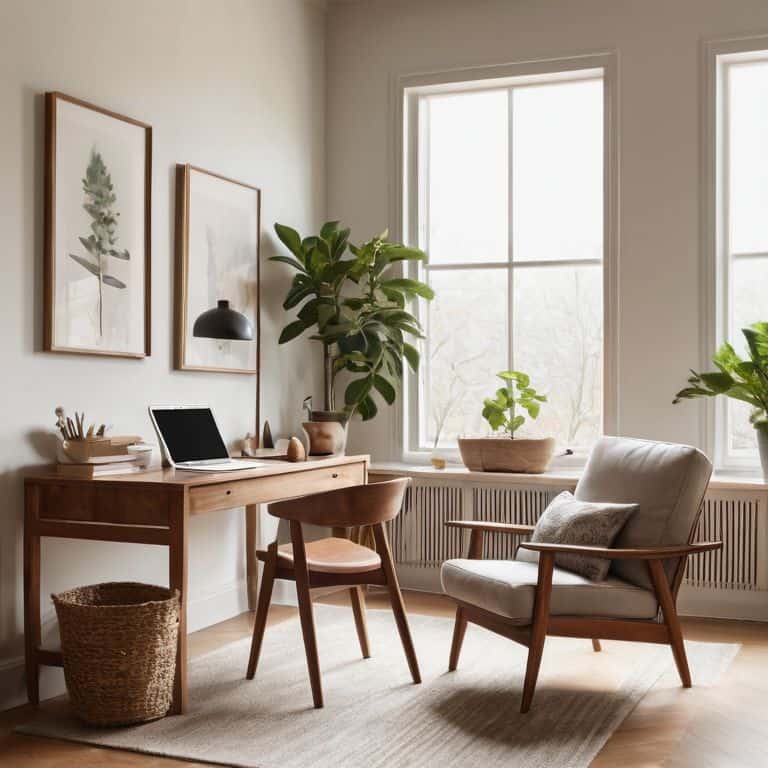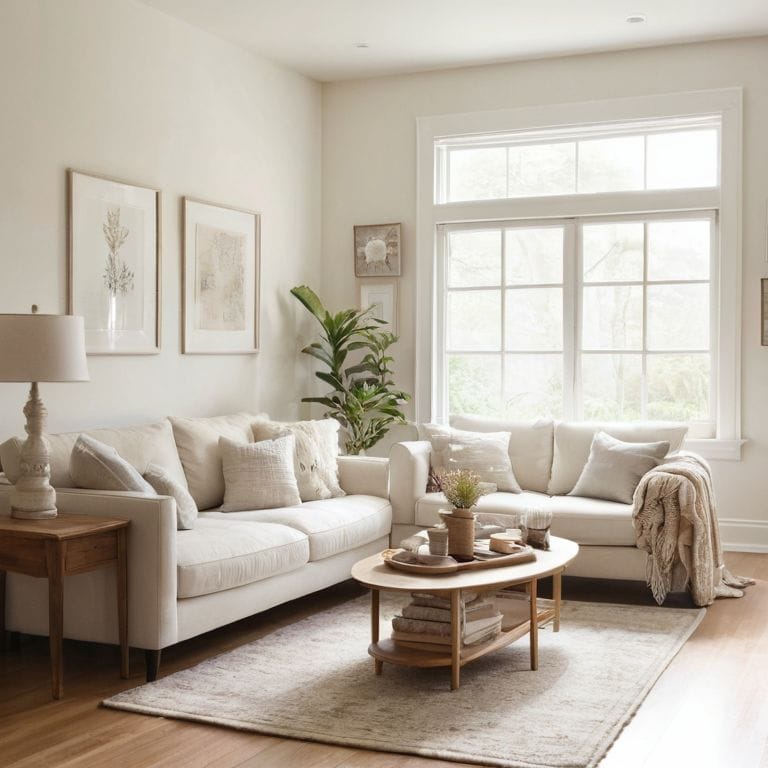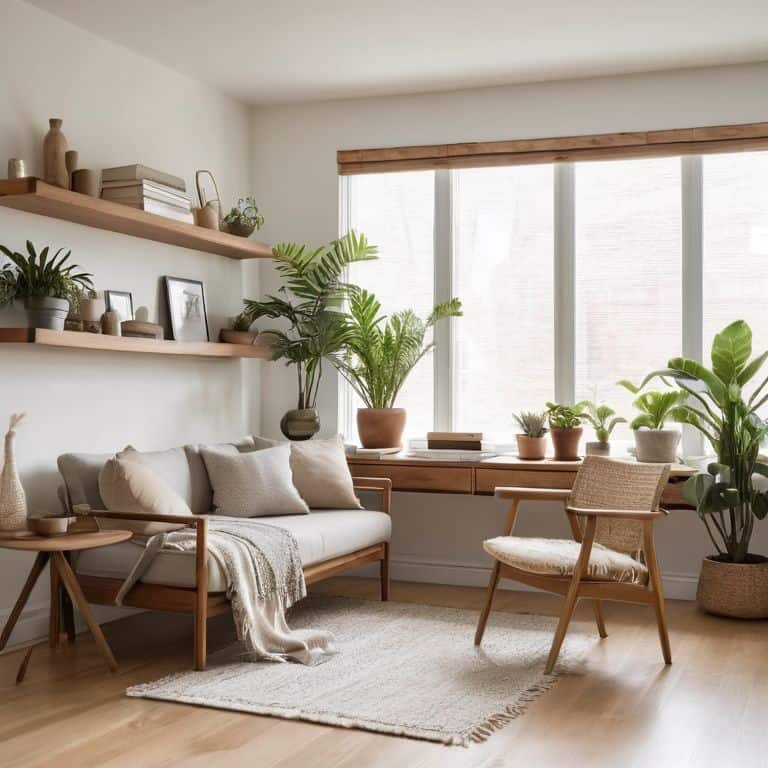As I sit in my own sanctuary, surrounded by the soothing sounds of ambient music and the gentle glow of my bonsai trees, I’m reminded of the transformative power of a guide to home organization. For years, I’ve helped people uncover the emotional benefits of organizing their spaces, and I’ve come to realize that it’s not just about tidying up – it’s about creating a haven that nurtures both body and mind. I’ve seen firsthand how cluttered environments can weigh heavily on our mental wellbeing, and I’m passionate about sharing my expertise to help others find peace in their own homes.
In this article, I promise to share practical advice and straightforward systems for organizing your space, without any gimmicks or false promises. You’ll learn how to “interview” your belongings, determine what sparks joy and serves a purpose, and create a customized plan for maintaining your newfound serenity. My goal is to empower you with the knowledge and confidence to transform your home into a true sanctuary, where you can breathe easily, think clearly, and live more mindfully. By the end of this guide, you’ll be equipped with the tools and insights to create a space that truly feels like your own little slice of heaven.
Table of Contents
Guide Overview: What You'll Need

Total Time: 4 hours 30 minutes
Estimated Cost: $50 – $100
Difficulty Level: Intermediate
Tools Required
- Label Maker (with extra labels)
- Tape Measure
- Level (for shelf installation)
- Drill (with screwdriver bits)
- Step Stool (for high shelf access)
Supplies & Materials
- Storage Bins (various sizes)
- Shelving Units (customizable to 6 feet or more in length)
- 2-in x 4-in lumber (for custom shelving)
- Hooks (for hanging items)
- Adhesive Strips (for hanging heavy items, rated for 5 pounds or more)
Step-by-Step Instructions
- 1. First, let’s start by understanding that creating a sanctuary begins with a mental shift – it’s about recognizing that our homes are a reflection of our minds. To begin, take a few moments to walk through your home, and as you enter each room, ask yourself how you feel. Are there areas that make you feel overwhelmed or anxious? Identifying these spaces is the first step towards change.
- 2. Next, gather some basic supplies: boxes, trash bags, a marker, and a notebook. These will be your tools as you embark on this journey. The notebook is particularly important as it will serve as your organizing journal, where you’ll note down your thoughts, feelings, and decisions about each item you encounter. This process is about more than just tidying up; it’s about connecting with your belongings on a deeper level.
- 3. Now, select a room to start with – preferably the one where you spend most of your time or the one that bothers you the most. Stand in the center of the room, take a deep breath, and visualize the space you want to create. Imagine how you want to feel in this room. Is it calm, productive, or creative? Having a clear vision of what you want to achieve will guide your decisions as you organize.
- 4. Begin by picking up items that are out of place and sorting them into categories (e.g., items to put away, items to donate, items to throw away). As you handle each item, ask yourself if it serves a purpose or brings joy. If the answer is no, consider letting it go. Remember, the goal is to surround yourself with things that contribute to your well-being, not detract from it. This process of interviewing your belongings might feel strange at first, but it’s a powerful way to reconnect with what’s truly important to you.
- 5. Once you’ve sorted through the items in the room, it’s time to think about storage solutions. Consider what you need to store and how you can do so in a way that keeps items accessible yet out of sight. For me, building simple, functional furniture has been a hobby that complements my organizing work perfectly. Even a simple shelf or a storage bin can make a big difference in maintaining your space.
- 6. As you put things back, do so with intention. Assign a home for each item, a place where it will be kept when not in use. This is key to maintaining your space over time. Remember, every item should have a purpose or a place – if it doesn’t fit into either category, it might be time to reconsider its presence in your home. This mindset shift towards minimalism and functionality can be incredibly liberating.
- 7. Finally, take a step back and appreciate your work. Notice how the room feels now. Celebrate your successes, no matter how small they may seem. Organizing your home is a journey, and it’s okay to take it one step at a time. As you move from room to room, applying these principles, you’ll start to notice a profound impact on your mental clarity and sense of peace. This is what transforming your space is all about – creating a sanctuary that nurtures both body and soul.
A Guide to Home Organization

As we delve deeper into the world of home organization, it’s essential to consider decluttering strategies for beginners. This process involves more than just tidyings up; it’s about creating a space that fosters mental clarity and emotional well-being. By implementing simple yet effective systems, individuals can transform their living areas into havens of productivity and peace.
When it comes to designing functional spaces, custom closet design ideas can play a significant role. A well-organized closet can set the tone for the entire home, promoting a sense of order and serenity. By incorporating sustainable storage solutions, homeowners can maintain their space while also reducing their environmental footprint.
To maintain a sense of control and organization, creating a home inventory system can be incredibly beneficial. This system allows individuals to keep track of their belongings, making it easier to streamline their space and reduce clutter. By implementing these strategies, people can create a home that is not only organized but also nurturing and inspiring.
Decluttering for Inner Peace
As we delve into the process of decluttering, it’s essential to remember that it’s not just about removing physical items, but also about creating space for mental clarity. I encourage my clients to “interview” each belonging, asking if it serves a purpose or brings joy. This simple yet profound exercise helps to detach emotional value from mere possessions. By letting go of items that no longer resonate with us, we open ourselves up to a sense of liberation and renewal.
In my experience, decluttering can be a therapeutic journey, allowing us to reconnect with our inner selves. As we slowly peel away the layers of clutter, we begin to uncover a sense of calm and serenity. It’s a process that requires patience, empathy, and self-awareness, but the rewards are immeasurable. By embracing the art of decluttering, we can transform our living spaces into true sanctuaries, reflecting the peace and tranquility we desire in our minds.
Sustainable Storage for Sanity
To maintain the sense of serenity we’ve worked to create, it’s crucial to implement storage solutions that are not only functional but also sustainable. This means opting for storage containers and shelves that are made from eco-friendly materials, such as reclaimed wood or bamboo. Not only do these materials bring a touch of nature into our homes, but they also serve as a reminder of our commitment to living in harmony with the environment.
By choosing sustainable storage options, we’re able to preserve the peaceful atmosphere of our homes while also contributing to a healthier planet. This thoughtful approach to storage is a key component of my philosophy: every object in our home should have a purpose or a place, and the materials we choose for storage are no exception.
Finding Harmony in Your Home: 5 Essential Tips
- Start by assigning a purpose or a place to every object in your home, ensuring each item earns its keep and contributes to your sense of calm
- Implement a ‘one in, one out’ policy to maintain balance and prevent clutter from accumulating over time
- Designate a ‘launching pad’ near the entrance of your home where family members can place their belongings, keeping them organized and easy to find
- Use vertical space efficiently by installing shelves, hooks, or storage units that keep items off the floor and out of the way, creating a sense of openness
- Schedule regular ‘maintenance sessions’ to review your belongings, reassess your needs, and make adjustments as necessary to keep your space organized and peaceful
Key Takeaways for a Peaceful Home
By embracing the concept that every object should have a ‘purpose or a place’, you can begin to let go of clutter and create a more serene living environment
Implementing simple, logical systems for organization can significantly reduce stress and improve your mental clarity, allowing you to enjoy your home as a true sanctuary
Through the process of ‘interviewing’ your belongings and choosing what to keep, you’ll not only declutter your space but also gain a deeper understanding of what brings you joy and peace, reflecting a more organized and fulfilling life
Organizing Your Sanctuary
As we tidy our spaces, we’re not just clearing clutter, we’re clearing our minds – making room for what truly matters, and finding peace in the process.
Nathan Reed
Embracing Serenity: The Final Step

As we conclude this journey through home organization, it’s essential to reflect on the key principles we’ve explored: from the initial decluttering process to implementing sustainable storage solutions. These steps, though simple, form the foundation of a sanctuary that not only reflects our inner peace but also nurtures it. By embracing the concept that every object should have a purpose or a place, we’ve not only tidied our physical spaces but also clarified our mental landscapes.
The true power of home organization lies not in the act of tidying itself, but in the transformation it sparks within us. As you stand in your newly organized space, remember that this is just the beginning. Every carefully placed item, every calm corner, is a testament to your commitment to your own serenity. And as you move forward, may your home remain a haven that inspires inner peace, reminding you that the harmony of your outer world is a beautiful reflection of the harmony within.
Frequently Asked Questions
How do I decide what items to keep and what to discard when decluttering my home?
To decide what to keep and discard, I recommend ‘interviewing’ each item, asking yourself if it serves a purpose or brings joy. Be honest, and consider the emotional attachment – does it spark happiness or unnecessary stress? This simple yet powerful exercise helps clarify what truly belongs in your sanctuary.
What are some creative ways to repurpose old or unused items to reduce waste and create sustainable storage solutions?
I love giving old items a new lease on life. Consider repurposing vintage ladders as bookshelves, mason jars as desk organizers, or old crates as storage bins. You can also upcycle old furniture, like turning a door into a coffee table or a pallet into a shelving unit. Get creative and have fun with it – it’s a great way to reduce waste and add character to your space.
Can the principles of home organization be applied to small or unusual living spaces, such as apartments or tiny homes?
Absolutely, the principles of home organization can be applied to small or unusual living spaces. In fact, it’s often more crucial in these areas to ensure every object has a purpose or a place, maximizing functionality and serenity.
